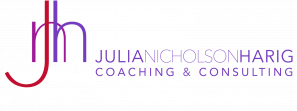Hello Friends!
This particular issue of the newsletter has been challenging to write. I’ve been staring at a blank page on and off for a few days, trying to balance my wish to share information about ‘women in the workforce’ that I think is vitally important, with the knowledge that potentially only half of my readers will find it interesting.
And therein lies the problem. Will half of my readers not be interested in reading about women in the workforce? Would I, as a woman, not read about men? I know that I actually would read about men, just as I know that I have actively worked to expand my exposure to, and influence by BIPOC authors. There is a lot I don’t know. But I do know that I am a huge proponent of personal growth and learning, and also of diversity of thought! I know that there is a lot to learn, and a significant portion of that lack of knowledge is down to lived experience and exposure. It’s on me to change that.
So I’m hoping that you, like me, are both open to and excited by learning about different perspectives and lived truths. And if that is the case – which I sincerely hope it is (I mean, you do love reading this newsletter so chances are pretty darn strong!) – then let’s dive into a topic that is really close to my heart: Women in the Workforce, and The Power Gap. Will it be an uplifting read? Probably not. Will it be informative, interesting, eye-opening, and also potentially shock or motivate you into action and/or change? I sure {bleep!} hope so!! 😄
IF YOU READ ONE THING
…then let it be the 2021 McKinsey Women in Work Report. This year’s report focused not only on women in the workforce, but on diversity, equity, and inclusion. There were a lot of sobering statistics:
- Senior level women are twice as likely as senior level men to spend substantial time on DEI work that falls outside their formal job responsibilities. (p.17)
- Men in senior leadership outnumber women 2:1 – but employees are equally likely to say that women and men leaders have supported their career development. (p.18)
- 87% of companies say that employee work to support well-being and DEI is critical. Only 25% say this work receives substantial formal recognition. (p.21)
- Despite saying that gender and racial diversity are among their most important business priorities, only about two-thirds of companies hold senior leaders accountable for progress on diversity goals. […] Moreover, among companies that do hold senior leaders accountable, less than half factor progress on diversity metrics into performance reviews. (p.39)
Identifying where you ARE is a critical step in figuring out how to get where you want to go. “You can’t read the label if you are inside the jar.” We need to identify our current position in order to chart our course forward. This report does indeed give a lot of practical and applicable suggestions and solutions for how to do just that. The report is only 50 or so pages. Well worth your time!!
WOMEN AND DEI
Shadow work, non-promotable tasks – there is a long list of duties and chores that are essential to making a workplace function but that aren’t listed in anyone’s job description. As referenced in the first bullet point above, substantial time is spent on work that falls outside of formal responsibilities, and women are taking on / volunteering for / being made to do these tasks in much higher percentages than men. And while you would think that being seen as willing and helpful would be advantageous to one’s career path, that isn’t always the case.
Women were already taking on the lion’s share of the “office housework” and somehow, the hugely important initiatives of Diversity, Equity and Inclusion have been relegated to that category.
“The events of the last year and a half have put intense pressure on companies to do more to support employees and act on diversity, equity, and inclusion (DEI). Women leaders are meeting this moment and taking on the extra work that comes with it — but they’re not getting recognized or rewarded for it”
HBR Women Leaders Took on Even More Invisible Work During the Pandemic
Is it any wonder then, that women don’t feel welcome in the workplace when they aren’t actually being given the work or getting recognized in the same way as men? In fact, a mere 22% of women actually reported feeling a strong sense of belonging in the workplace. Pay gap issues, lack of psychological safety, and not “feeling their unique background and identity were valued at their company” also contribute to this.
FINANCIAL INEQUALITY
Reading Why Women Are Poorer Than Men by Annabelle Williams has also been really eye-opening. There are so many unconscious biases in the financial and economic system and this book is brilliant at showing where many of them are.
I also highly recommend you give fellow reader Kristine Beese and her business Untangle Money a follow – she advises women on their finances and really knows her stuff! It’s so important for women to understand how to manage their own finances, particularly as according to her website “For every $1 a man has in wealth, a woman has 32 cents.” !!
A SIGN OF HOPE
To leave you on a happy note, some things are starting to shift in a more positive direction concerning women in the workforce! Kelloggs in the UK “has announced it will provide more support to staff experiencing the menopause, pregnancy loss or fertility treatment. The firm said about 1,500 workers at its factories in Trafford and Wrexham and its Salford headquarters would benefit from a number of new measures. They include extra paid leave for those undergoing fertility treatment or staff who suffer the loss of a pregnancy. It said it was aiming to help staff feel “psychologically safe” at work.”
This is great news!
WHAT I’M READING
In this crazy busy time of year, more than ever I need a book to sink into and escape for a few minutes. My cousin recommended Secrets of a Charmed Life, and since I both trust her book choices (thank you Allie!) and it seemed like exactly the kind of story I was in the mood for, I downloaded it and dove in!
It did not disappoint. Beautifully written, wonderfully researched, and so mesmerizing, I devoured the book within a few days. It’s the story of a young woman at the start of WWII who gets sent to the countryside with her young half-sister to escape the German bombings of London. Most of the historical situation was entirely new to me. Aside from the fact that I knew of the Blitz, and that some children were sent to the country, I had no idea that almost all London’s children were sent to foster homes during this time, in many cases for the duration of the entire war. The story of the sisters was so well done, you just had to read more. One more page, one more chapter, five more minutes… I stayed up way past my bedtime a few nights in a row and did not regret it!!
WHAT I’M LISTENING TO
Even my latest podcast binge fits into our theme for this week! Not even on purpose. 😉 You might have noticed that I’ve been on a bit of a true crime podcast binge lately. One podcast seems to recommend another and I ended up coming across a podcast about Jack the Ripper’s victims. Now most people seem to “know” the story of Jack the Ripper – how he slaughtered 5 prostitutes in London’s East End in the 1880s. Well this podcast is about those victims. And about how only one of them was actually a sex worker. The biases of the time [I’d be tempted to argue that many of those biases are sadly still with us today] led to the all-male police force assuming that a woman out alone at night had to be a prostitute, no matter what evidence friends and family gave to the contrary. And not only were most of the female victims not prostitutes, the podcast does an excellent job of demonstrating how little self-determination a woman had in the Victorian era, and how few options were available to her to earn a living and raise her family without a husband. It’s brilliantly researched and narrated by a British historian who wrote a book on the matter called The Five.
Bad Women: The Ripper Retold isn’t about the murders of Jack the Ripper. It’s about the lives of the women he killed – how they lived, why they lived as they did, and who they really were. Absolutely fascinating both from a true crime and a historical perspective!!
I really hope you made it this far, and are happy you stuck with it!! Equality in the workplace is such an important topic. Fairness and Justice are two of my core values so this issue is really very near and dear to my heart!
There will be one more newsletter in 2021, and that will go out next week, rather than in the regular biweekly rotation – as that would be Christmas Eve! So check your inboxes next Friday for one of my favourite topics: the Year in Review!!
Speaking of which, I’m thrilled to say that all 10 spots for my Get Clear on Your Year coaching offer have been snapped up. They’ve been so in demand that I have opened a few more slots for January, so if you were thinking of booking one, now’s the time! Just get in touch!
Hope you are enjoying the holiday season and are able to take some time to read, relax, and do what makes you happy!
Have a magical weekend!
Hugs,



